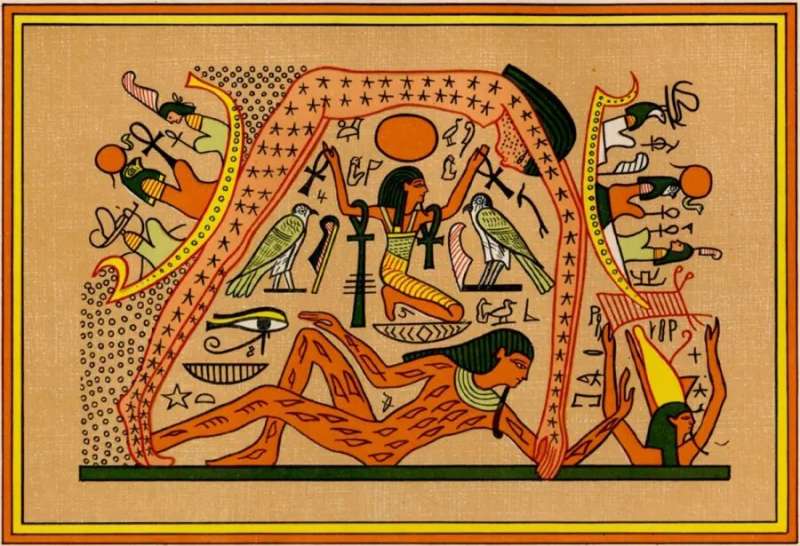This article has been reviewed according to Science X's editorial process and policies. Editors have highlighted the following attributes while ensuring the content's credibility:
fact-checked
trusted source
proofread
The hidden role of the Milky Way in ancient Egyptian mythology

Ancient Egyptians were known for their religious beliefs and astronomical knowledge of the sun, moon, and planets, but up until now, it has been unclear what role the Milky Way played in Egyptian religion and culture.
A new study by a University of Portsmouth astrophysicist sheds light on the relationship between the Milky Way and the Egyptian sky-goddess Nut.
Nut is the goddess of the sky, who is often depicted as a star-studded woman arched over her brother, the Earth god Geb. She protects the Earth from being flooded by the encroaching waters of the void, and plays a key role in the solar cycle, swallowing the sun as it sets at dusk and giving birth to it once more as it rises at dawn.
The paper draws on ancient Egyptian texts and simulations to argue that the Milky Way might have shone a spotlight, as it were, on Nut's role as the sky. It proposes that in winter, the Milky Way highlighted Nut's outstretched arms, while in summer, it traced her backbone across the heavens.
Associate Professor in Astrophysics, Dr. Or Graur, said, "I chanced upon the sky-goddess Nut when I was writing a book on galaxies and looking into the mythology of the Milky Way. I took my daughters to a museum and they were enchanted by this image of an arched woman and kept asking to hear stories about her."
"This sparked my interest, and I decided to combine both astronomy and Egyptology to do a double analysis—astronomical and cross-cultural—of the sky-goddess Nut and whether she really could be linked to the Milky Way."
Dr. Graur drew from a rich collection of ancient sources, including the Pyramid Texts, Coffin Texts, and the Book of Nut, and compared them alongside sophisticated simulations of the Egyptian night sky.
He found compelling evidence that the Milky Way highlighted Nut's divine presence.
Furthermore, Dr. Graur connected Egyptian beliefs with those of other cultures, showing similarities in how different societies interpret the Milky Way.
He said, "My study also shows that Nut's role in the transition of the deceased to the afterlife and her connection to the annual bird migration is consistent with how other cultures understand the Milky Way. For example, as a spirits' road among different peoples in North and Central America or as the Birds' Path in Finland and the Baltics."
"My research shows how combining disciplines can offer new insights into ancient beliefs, and it highlights how astronomy connects humanity across cultures, geography, and time. This paper is an exciting start to a larger project to catalog and study the multicultural mythology of the Milky Way."
The work is published in the Journal of Astronomical History and Heritage.
More information: Or Graur, The ancient Egyptian personification of the Milky Way as the sky-goddess Nut: An astronomical and cross-cultural analysis, Journal of Astronomical History and Heritage (2024). DOI: 10.3724/SP.J.1440-2807.2024.01.02
Provided by University of Portsmouth





















